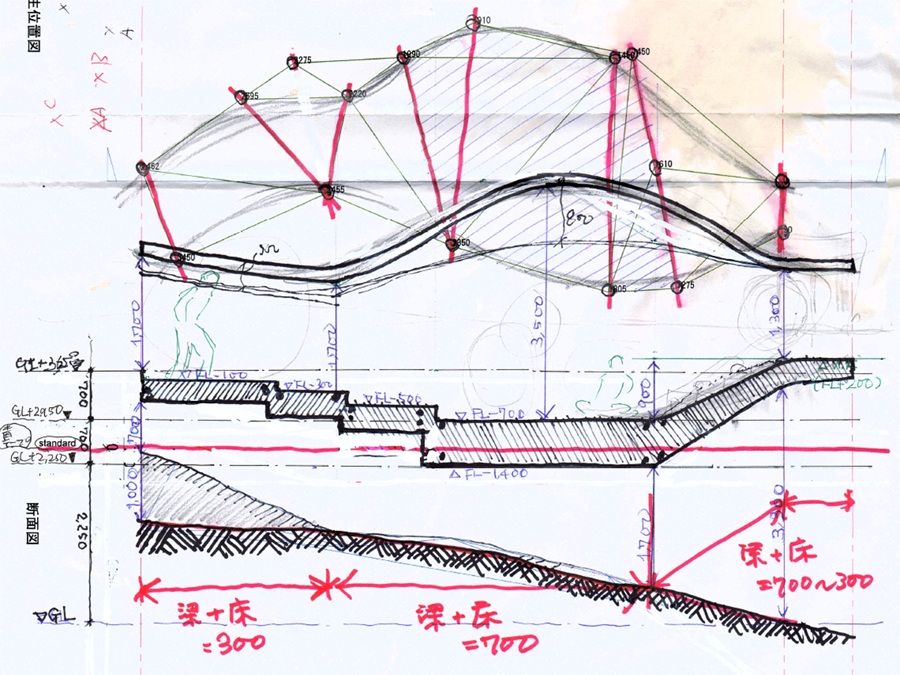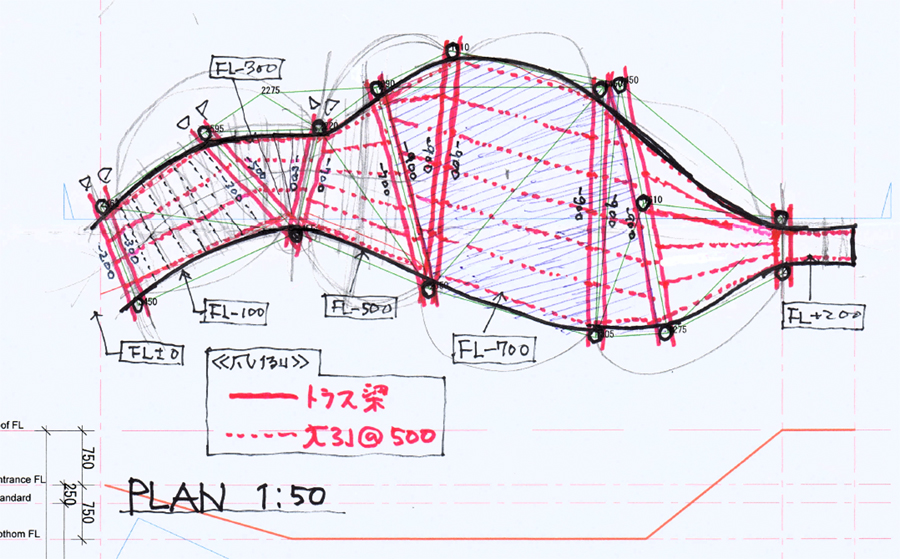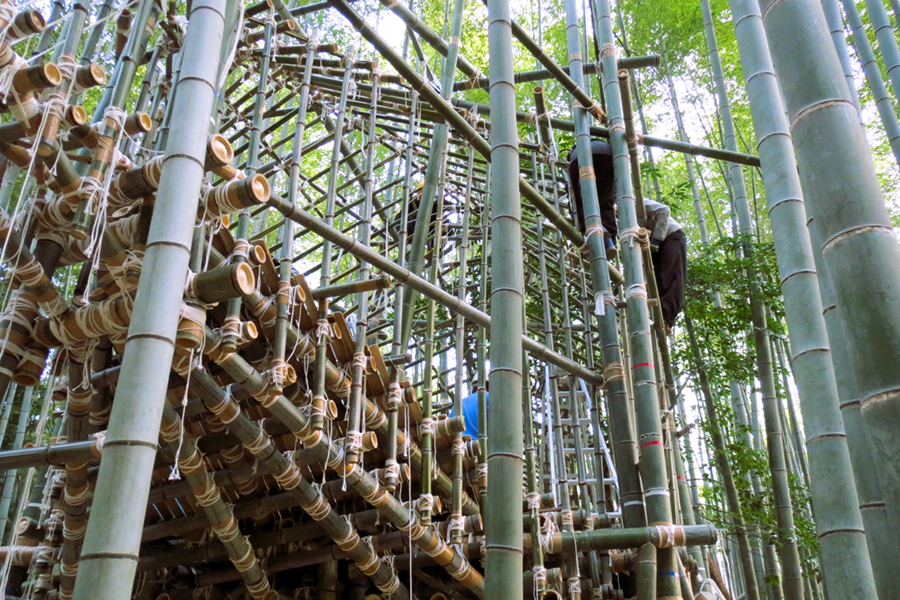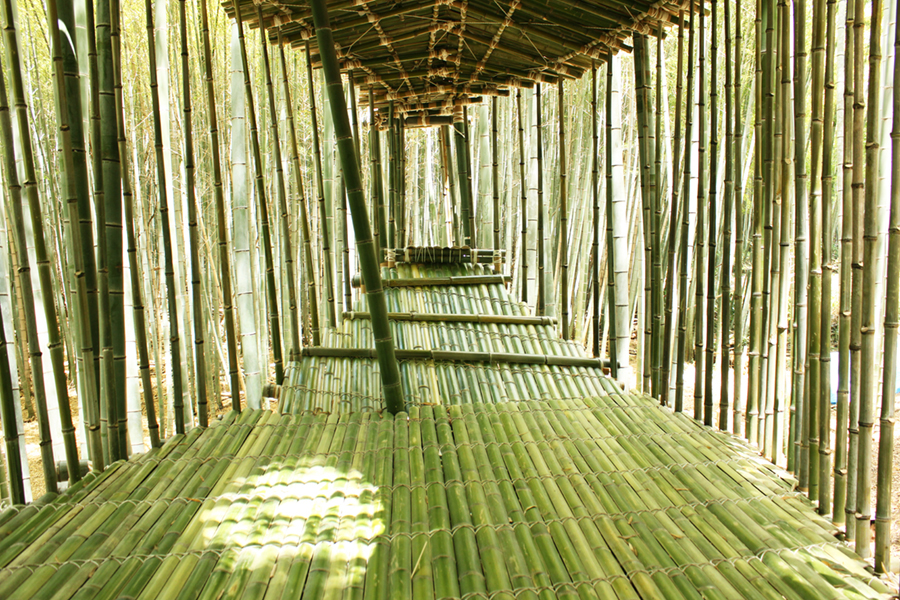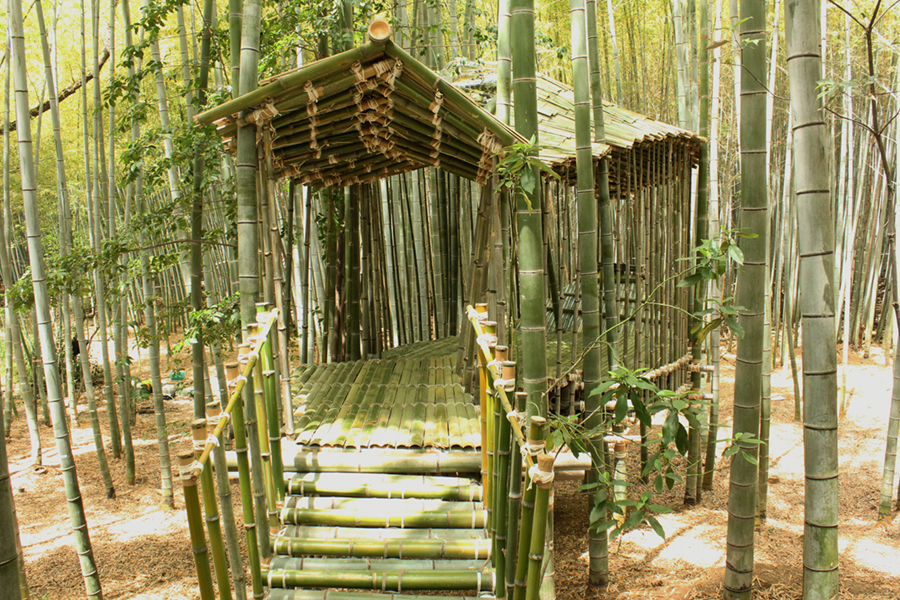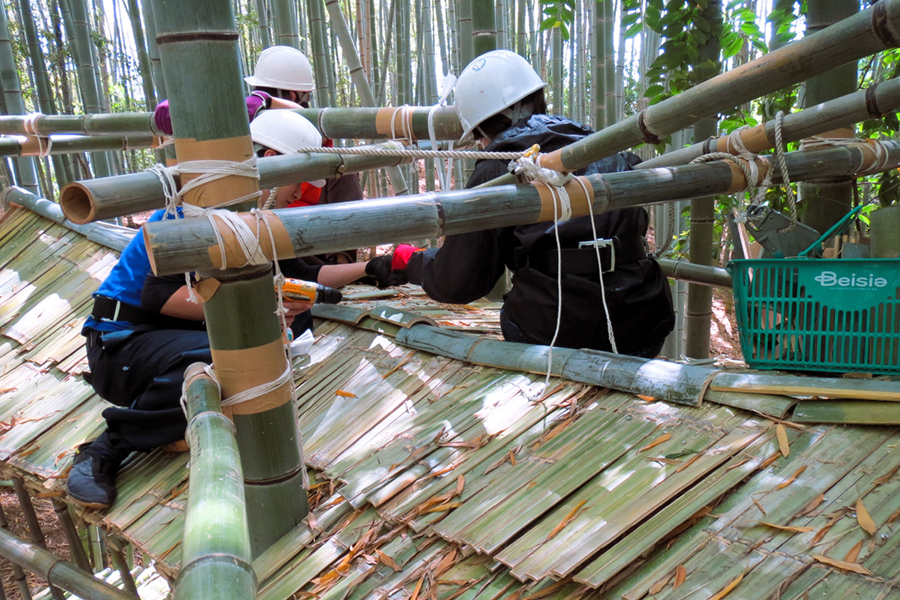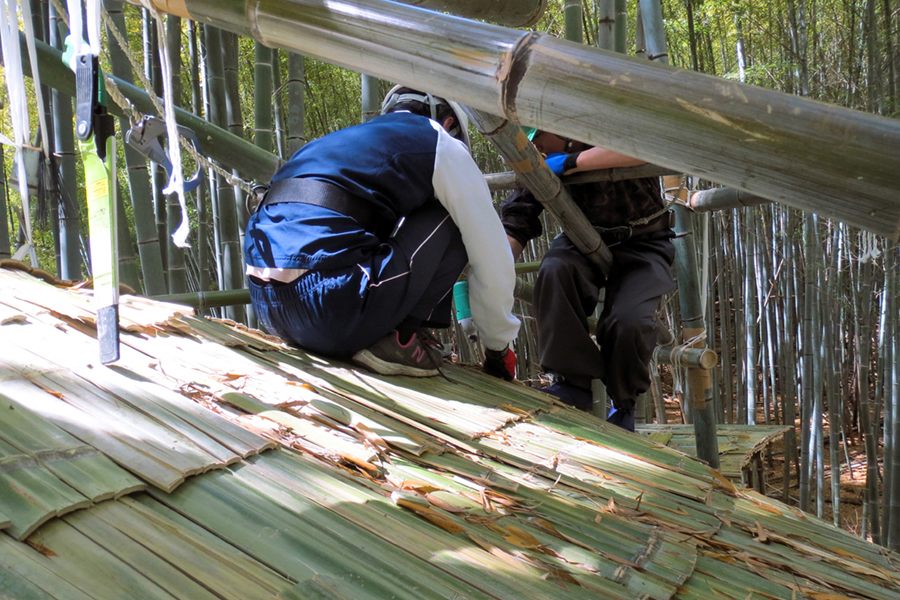滋賀県立大学 永井拓生+サステナブル構造デザイン研究室
THE UNIVERSITY OF SHIGA PREFECTURE
滋賀県立大学 永井拓生+サステナブル構造デザイン研究室
THE UNIVERSITY OF SHIGA PREFECTURE
滋賀県立大学 永井拓生+サステナブル構造デザイン研究室
THE UNIVERSITY OF SHIGA PREFECTURE
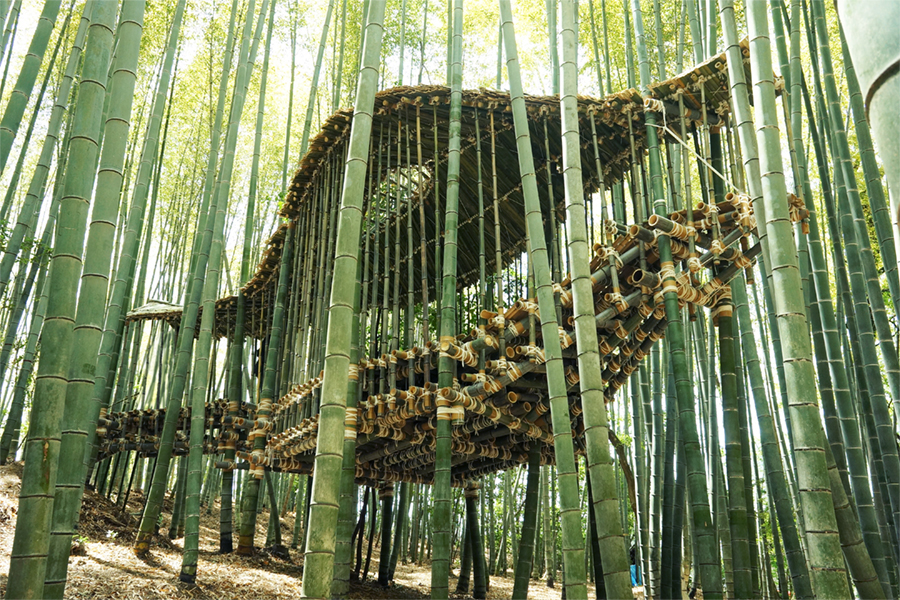
This treehouse employs naturally growing bamboo from a bamboo grove as its primary structural material. The design aimed to incorporate both the natural topography and the standing bamboo to create an organic architectural form. The structure is approached by descending along a slope from a small hill within the grove. Visitors pass through a narrow internal passage, which then opens into a spacious and bright interior.
The structural system of the Bamboo House is based on the concept of “living columns”, in which the existing bamboo culms themselves serve as vertical supports. Between these columns, horizontal bamboo beams are inserted, and bamboo joists are laid on top to form the floor. The joints between the round bamboo members use a combination of rope binding and anti-slip fabric tape to ensure secure connections. The roof structure consists of slender vertical bamboo poles arranged in a louver-like pattern above the floor beams, supporting a lightweight roof frame above.
Note: “Bamboo Dino” is an English translation by Nagai and is not the official English name.
Design and construction: Hirokazu Toki Lab + Takuo Nagai Lab + Volunteer students from the University of Shiga Prefecture
Program: Treehouse
Year of completion: 2013
竹林に自生する竹を構造に用いた竹構造のツリーハウスである。竹林の地形と自生する竹を活かした造形とすることを目標にデザインした。竹林の小高い丘となっているところから,斜面に沿って下るようにアプローチし,内部の狭い通路をくぐるようにして進むと大きく明るい空間に入るような構成となっている。
バンブーハウスの構造は,自生する竹を柱とした「生き柱」とし,柱間に竹の挟み梁を渡してさらにその上に竹の根太を敷いて床を作る構成である。丸竹同士の接合はロープと滑り止めの布テープを併用した接合法を用いている。屋根は,床の梁から細い柱を一定間隔でルーバー状に立てて,その上に屋根の小屋組みを載せる構成とした。
注:Bamboo Dinoは永井による「竹古竜」の英訳であり,公式な英語名称ではありません。
設計・施工:陶器浩一研究室+永井拓生研究室+滋賀県立大学学生有志
用途:ツリーハウス
完成年:2013年
